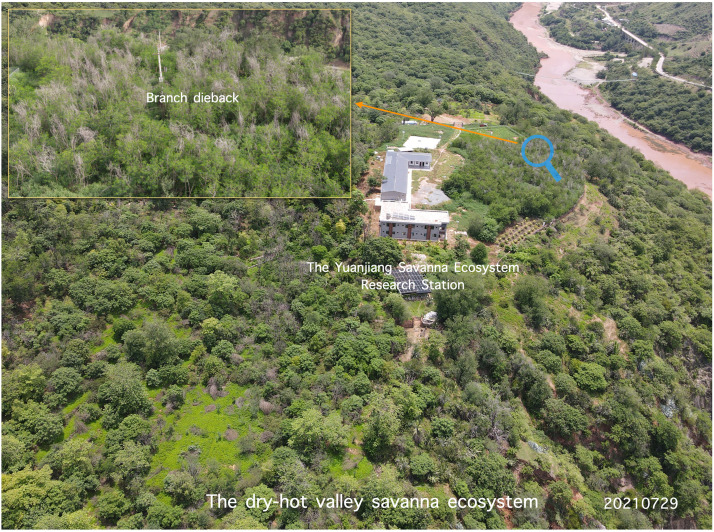Extreme drought events can affect plant physiological function and growth. Revealing the physiological mechanisms of how plants respond to extreme drought is of paramount importance for predicting plant performance under future climate change. In 2019, a valley savanna in Yuanjiang, China experienced an extreme drought. It provided a unique chance to test how woody plants across diverse functional groups physiologically respond to a natural extreme drought.
In a study published in Science of The Total Environment, researchers from Xishuangbanna Tropical Botanical Garden (XTBG) investigated how hydraulic traits and gas exchange parameters of savanna plants with different leaf habits (deciduous, semi-deciduous and evergreen) or growth forms (tree and shrub) respond to the extreme drought in 2019 in Yuanjiang.
The researchers measured hydraulic conductance of leaf, stem and whole-shoots, leaf gas exchange, and leaf mass per area of 18 common woody species during three rainy-seasons from 2019 to 2021 in a dry-hot valley savanna In Yaunjiang. They also compared the leaf gas exchange during and after the drought to that of a regular pre-drought year (2014).
They found that leaf stomatal and hydraulic conductance and maximum photosynthetic rate were significantly lower during the drought in 2019 than in the wetter years. In 2019, all studied plants maintained stomatal conductance at their minimum level observed, which could be related to high vapor pressure deficits.
After extreme drought leaf stomatal conductance and photosynthesis recovered. The photosynthetic recovery could be related to the maintenance of hydraulic integrity in stem xylem. Moreover, the physiological response to extreme drought was similar among leaf habits and growth forms.
“Our study reveals high physiological resilience of savanna plants to extreme drought in terms of recovery in leaf photosynthesis. It provides important physiological results for understanding how savanna plants across diverse leaf habits and growth forms respond to natural extreme drought, which can help predict the response of savanna ecosystems to future climate change,” said ZHANG Jiaolin of XTBG.
Contact
ZHANG Jiaolin Ph.D Principal Investigator
Key Laboratory of Tropical Forest Ecology, Xishuangbanna Tropical Botanical Garden, Chinese Academy of Sciences, Mengla, Yunnan 666303, China
E-mail: zjl@xtbg.org.cn

An aerial view of the dry-hot valley savanna ecosystem. (Image by YANG Da)

